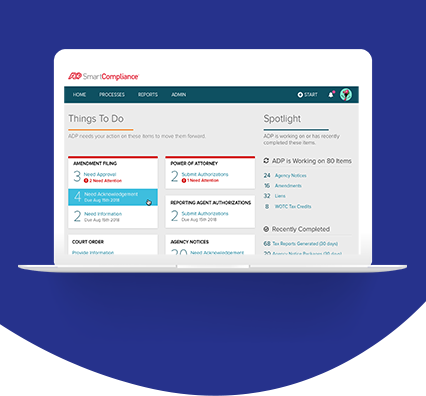What is the federal research and development (R&D) tax credit?
The federal research and development (R&D) tax credit results in a dollar for dollar reduction in a company’s tax liability for certain domestic expenses. Qualifying expenditures generally include the design, development or improvement of products, processes, techniques, formulas or software. Further details on the R&D tax credit are outlined under Section 41 of the Internal Revenue Code.
Who qualifies for R&D tax credits?
R&D tax credits are available to all organizations that engage in certain activities to develop new or improved products, processes, software, techniques, formulas or inventions. This accessibility is partly due to the Protecting Americans from Tax Hikes (PATH) Act of 2015, which broadened the ability of many small-to-midsize businesses to monetize the R&D credit.

How to claim R&D tax credits
Businesses can claim the R&D Credit by filing IRS Form 6765, Credit for Increasing Research Activities. As part of the process, they need to identify qualifying expenses and provide adequate documentation that shows how these costs meet the requirements under Internal Revenue Code Section 41. Financial records, business records, oral testimony and technical documents may be used for this purpose.
How to fill out Form 6765
To document their qualified R&D expenses, businesses must complete the four basic sections of Form 6765:
- Section A is used to claim the regular credit and has eight lines of required information (lines 1,2,3,7,8,10,11 and17).
- Section B applies to the alternative simplified credit (ASC).
- Section C identifies additional forms and schedules that warrant reporting based on business structure.
- Section D is only required for qualified small businesses (QSBs) making a payroll tax election.
The IRS recommends that businesses calculate their credit using both the regular credit and simplified credit methods and then fill out the section (A or B) that results in the greatest tax benefit.
How does the R&D tax credit work?
Typically, 6% to 8% of a company’s annual qualifying R&D expenses can be applied, dollar for dollar, against its federal income tax liability. Various activities may qualify for the credit, including but not limited to:
- Developing processes, patents, formulas, techniques, prototypes or software
- Improving or redesigning existing products
- Hiring scientists, designers or engineers that are engaged in qualified activities
- Devoting time and resources to creating (manufacturing or developing) new or innovative products
- Developing intellectual property
- Paying certain amounts for salaries, supplies, contract research and cloud hosting
Businesses can also claim an R&D tax credit of up to $250,000 per year against their payroll taxes. Eligible organizations include those that have under $5 million in gross receipts in the current year and no more than 5 years of generating gross receipts, including the current year. New businesses, meanwhile, can offset payroll taxes for up to five years, with a maximum of $1.25 million in total credits used on their quarterly federal payroll tax returns.
What qualifies as research and development?
Activities that generally qualify for the R&D credit have to meet the IRS’s four-part test:
- Permitted purpose
The activity must be related to developing or improving the functionality, quality, reliability or performance of a business component (i.e. product, process, software, technique, formula or invention). - Technological in nature
The business component’s development must be based on a hard science, such as engineering, physics and chemistry, or the life, biological or computer sciences. - Elimination of uncertainty
From the outset, the organization must have faced technological uncertainty when designing or developing the business component. - Process of experimentation
The company must have evaluated multiple design alternatives or employed a systematic trial and error approach to overcome the technological uncertainties.
What does R&D tax credit mean?
The R&D credit means that organizations that invest in qualified research and development activities to incentivize innovation and growth (as defined in Internal Revenue Code section 41) may be eligible for a general business tax credit.
How far back can you claim R&D tax credits?
Businesses can claim the R&D credit retroactively by filing amended returns for any open tax years, which in most cases, is three years. The time frame may be longer, however, if the organization endured losses during that period.
Is R&D tax credit taxable income?
The R&D credit reduces federal taxable income, meaning that businesses receive a dollar-for-dollar tax credit and still get to deduct expenses related to research and development.
Do R&D tax credits expire?
The Protecting Americans from Tax Hikes (PATH) Act of 2015 permanently extended the R&D credits available under Section 41 of the Internal Revenue Code. If there is a lack of tax liability, business may carry unused credits forward for up to 20 years.
How can ADP help me maintain tax credit compliance as laws and requirements change?
ADP provides an unparalleled combination of experience, technology and resources to help make the entire process of claiming tax credits as simple, streamlined and predictable as possible. We maintain relationships with federal, state and local government agencies and continuously monitor for changes in applicable legislation and compliance requirements. As a result, we’re able to provide proactive information and insights, as well as ongoing audit support.
How can ADP help ensure that I am capturing tax credits for which my company is eligible?
For its payroll clients, ADP already maintains the data necessary to calculate tax credits, support compliance and deliver process visibility through expanded reporting capabilities. What’s more, our expertise and technical resources helps clients learn about tax credit opportunities beyond R&D for added potential savings.
Does ADP work with CPAs to support tax credit compliance?
Yes, ADP partners with CPAs nationally to help maximize tax credits captured and maintain compliance. Our ability to provide secure access to client payroll data allows CPAs to be more consultative with clients when exploring tax credit opportunities. We also offer optional revenue sharing arrangements for CPAs so they can offset their consulting fees and eligible clients can make the most of their return on investment.



